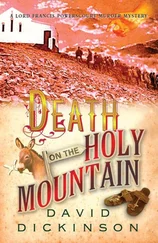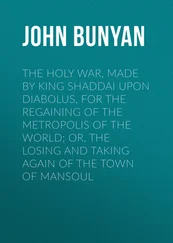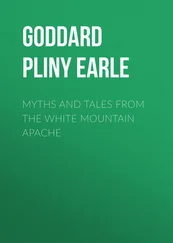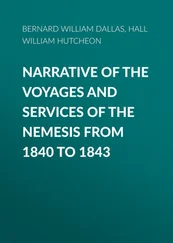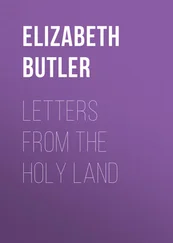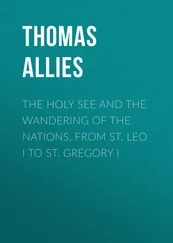HARRY RITCHIE, Mail on Sunday
‘Because he has the interests and enthusiasms of a scholar Dalrymple, with his magnificent zest, inspires the reader. We relish the tense air of south-east Turkey, the threat of Lebanon, the menace of Upper Egypt; and so does Dalrymple, at least in the vigorous telling of it. Massacres without number, enforced migrations, local wars: the effect of these events on human beings is burned into the pages of this excellent book. Yet Dalrymple is a delightful companion for the reader: a sunny equanimity shines around him. The self-portrait which emerges from these pages shows us a Renaissance head, not swollen but large with knowledge, painted like that of the Duke of Urbino by Piero della Francesca, in profile, against a library window through which may be discerned the delectable landscape of adventure’
PHILIP GLAZEBROOK, Literary Review
‘His biggest book yet: a large, scholarly, funny, meandering and passionate tome … Dalrymple’s enthusiasm is infectious, and his gentle osmotic supply of theological and historical background to Byzantine culture means that by the end any reader feels half expert’
NIGEL SPIVEY, Business Weekly
‘From the Holy Mountain is a remarkable travel book, beautifully written, alive to the politics of the day, and informed on the history and theology of the region’
ADAM FORD, Church Times
‘Neither the panache of William Dalrymple, nor the allure of the places he describes – Mount Athos, Damascus, the Egyptian desert – are what makes From the Holy Mountain so compelling. Its secret is the sense of history derived from the author’s decision to base his journey on The Spiritual Meadow , a guide to the monasteries and holy men of the eastern Roman Empire, written in the sixth century by the monk John Moschos. Following in his tracks, often to the same churches, the author travels through the Levant, listening to the prayers and fears of the region’s Christians … Dalrymple describes his encounters with monks and murderers with a combination of humour and scholarship’
PHILIP MANSEL, Country Life
‘An eloquent, poignant and courageous account of a journey that pits the idealism of the past against the hatred, dispossession and denial of the present’
KAREN ARMSTRONG
‘Fascinating, compelling and deeply moving’
WILLIAM BARLOW, Catholic Herald
‘Memorable … William Dalrymple’s raw and direct approach is something new, and despite its author’s eye for humour and irony, Dalrymple’s West Asian travelogue is harder, bleaker and expressed with an equality of spirit absent from the accounts of typical English romantics. As a result, From the Holy Mountain makes a profound impression’
CHRISTOPHER WALKER, Times Literary Supplement
‘An assured blend of travelogue and history … Dalrymple is a born travel writer, with a nose for adventure and a reporter’s healthy scepticism. His quirky, exhilarating mosaic will appeal to readers of all faiths’
Publishers Weekly
‘Outstanding … To be a good writer takes courage. To be a good travel writer may take more. Dalrymple is a good writer in an absolutely unpretentious way. The trouble with many good modern minds is that they ignore the past. Dalrymple does not, and by telling us of the past as it is enveloped by the present he is also telling of the future. He is not a prophet, simply one of the very few good, honest writers left’
DOM MORAES, Outlook
Dedication Table of Contents Cover Title Page Copyright Praise Dedication I. THE MONASTERY OF IVIRON, MOUNT ATHOS, GREECE 29 JUNE 1994. THE FEAST OF SS. PETER AND PAUL II. PERA PALAS HOTEL, ISTANBUL, TURKEY, 10 JULY 1994 III. THE BARON HOTEL, ALEPPO, SYRIA, 28 AUGUST 1994 IV. HOTEL CAVALIER, BEIRUT, LEBANON, 23 SEPTEMBER 1994 V. THE MONASTERY OF MAR SABA, ISRAELI-OCCUPIED WEST BANK, 24 OCTOBER 1994 VI. HOTEL METROPOLE, ALEXANDRIA, EGYPT, 1 DECEMBER 1994 KEEP READING GLOSSARY BIBLIOGRAPHY OF PRINCIPAL SOURCES INDEX ACKNOWLEDGEMENTS About the Author Also by William Dalrymple About the Publisher
For my parents with love and gratitude
Cover
Title Page From the Holy Mountain A JOURNEY IN THE SHADOW OF BYZANTIUM
Copyright
Praise
Dedication
I.
THE MONASTERY OF IVIRON, MOUNT ATHOS, GREECE 29 JUNE 1994. THE FEAST OF SS. PETER AND PAUL
II.
PERA PALAS HOTEL, ISTANBUL, TURKEY, 10 JULY 1994
III.
THE BARON HOTEL, ALEPPO, SYRIA, 28 AUGUST 1994
IV.
HOTEL CAVALIER, BEIRUT, LEBANON, 23 SEPTEMBER 1994
V.
THE MONASTERY OF MAR SABA, ISRAELI-OCCUPIED WEST BANK, 24 OCTOBER 1994
VI.
HOTEL METROPOLE, ALEXANDRIA, EGYPT, 1 DECEMBER 1994
KEEP READING
GLOSSARY
BIBLIOGRAPHY OF PRINCIPAL SOURCES
INDEX
ACKNOWLEDGEMENTS
About the Author
Also by William Dalrymple
About the Publisher
I
THE MONASTERY OF IVIRON, MOUNT ATHOS, GREECE 29 JUNE 1994. THE FEAST OF SS. PETER AND PAUL
My cell is bare and austere. It has white walls and a flagstone floor. Only two pieces of furniture break the severity of its emptiness: in one corner stands an olive-wood writing desk, in the other an iron bedstead. The latter is covered with a single white sheet, starched as stiff as a nun’s wimple.
Through the open window I can see a line of black habits: the monks at work in the vegetable garden, a monastic chain-gang hoeing the cabbage patch before the sun sets and the wooden simandron calls them in for compline. Beyond the garden is a vineyard, silhouetted against the bleak black pyramid of the Holy Mountain.
All is quiet now but for the distant breaking of surf on the jetty and the faint echo and clatter of metal plates in the monastery kitchens. The silence and solemnity of the place is hardly designed to raise the spirits, but you could hardly find a better place to order your mind. There are no distractions, and the monastic silence imposes its own brittle clarity.
It’s now nine o’clock. The time has finally come to concentrate my thoughts: to write down, as simply as I can, what has brought me here, what I have seen, and what I hope to achieve in the next few months.
My reference books are laid out in a line on the floor; the pads containing my library notes are open. Files full of photocopied articles lie piled up below the window; my pencils are sharpened and upended in a glass. A matchbox lies ready beside the paraffin storm lantern: the monastery generator is turned off after compline, and if am to write tonight I will have to do so by the light of its yellow flame.
Open on the desk is my paperback translation of The Spiritual Meadow of John Moschos , the unlikely little book which first brought me to this monastery, and the original manuscript of which I saw for the first time less than one hour ago. God willing, John Moschos will lead me on, eastwards to Constantinople and Anatolia, then southwards to the Nile and thence, if it is still possible, to the Great Kharga Oasis, once the southern frontier of Byzantium.
This morning, six days after leaving the damp of a dreich Scottish June, I caught ship from Ouranoupolis, the Gate of Heaven, down the peninsula to the Holy Mountain.
We passed a monastic fishing boat surrounded by a halo of seagulls. Opposite me, three large monks in ballooning cassocks sat sipping cappuccinos under an icon of the Virgin; over their grey moustaches there rested a light foam of frothed milk. Behind them, through the porthole, you could see the first of the great Athonite monasteries rising up from sandy bays to crown the foothills of the mountain. They are huge complexes of buildings, great ash-coloured fortresses the size of small Italian hill-towns, with timber-laced balconies hanging below domed cupolas and massive, unwieldy medieval buttresses.
Читать дальше

